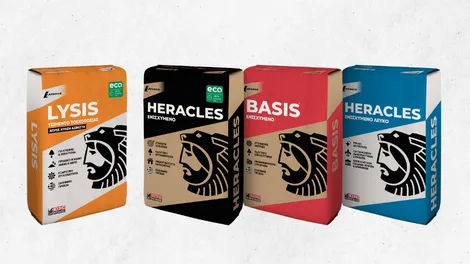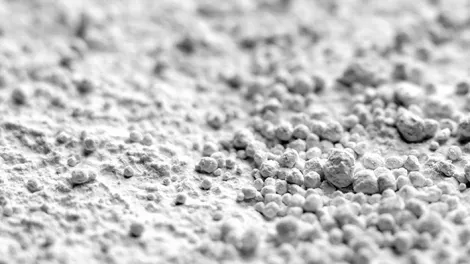Cement
For the first time in history, Cement is found in the buildings of ancient Egyptians and in Roman times. After several centuries of absence, cement reappears in the spotlight in the early 19th century and has since then dominated residential development by incorporating high-tech innovations.
What is it?
Cement is the binder material and key component of concrete and mortar. Its properties are due to its main active ingredient, clinker. When clinker interacts with water, derivatives slightly soluble in water are created, which over time acquire a stiff and strong structure.
Clinker, when mixed with water and aggregates, is also responsible for the ability of cement to acquire adhesive properties while retaining coarse aggregates (gravel, fine aggregate) and forming a solid body suitable for constructions. This product is known as concrete.
Useful information about cement
According to the European Directive 89/106 from 01/04/01 and the regulation 305/2011, the cements that circulate in all the EU Member States must be certified, CE marked and comply with applicable European standards, EN 197-1: Cement Part - 1: "Composition, specifications and conformity criteria for common cements" and EN 197-2: Cement Part - 2 : "Conformity assessment". In our country the respective Greek Standards ELOT EN 197-1 and ELOT EN 197-2 apply.
For the production of cement, raw materials as well as substitution materials (pozzolan, calcareous fly ash, etc.) are used, found in every country. Based on the availability of materials and the requirements of the applications, various types of cements produced worldwide were created, such as Portland cement, cement with pozzolan, fly ash, limestone, etc. All of the types are included in the ELOT EN 197-1 standard.
The symbolism of the various cements, according to the standard ELOT EN 197-1, is determined by the:
• Type of cement
• Clinker percentage
• Type of additives
• Endurance class
• Level of early endurance
Having developed extensive know-how in cement, we offer our customers high quality products, reliable solutions and services that are unique in the market.
The Cement Sales Technical Support Department of HERACLES Group focuses on providing information on the properties, quality and applications of cement products, as well as resolving technical issues.
More specifically, the department:
- Announces technical characteristics of cement products.
- Suggests proposals to reduce the cost of concrete production.
- Operates in transferring and exchanging know-how with our customers.
- Shares information about the existing Technical and Legal Framework.
- Provides consulting services for specialized uses of cement.
- Holds quality certificates for our products.
- Coordinates the design of concrete composition studies of our customers in collaboration with the Hellenic Concrete Technology Center (HCTS)
From the quarry to the final product, follow the stages of the cement production process.
Step 1: extraction and preparation of raw materials
The raw materials required for the production of cement are mined from our quarries (limestone, clay, slate, etc.) after geological research and chemical analysis, in specific quantities and proportions.
They are then crushed and transported to the factory to be stored.
Step 2: Grinding raw materials and baking
The ingredients are ground into a very fine powder.
The mixture of materials is homogenized, preheated and then led to the kiln, which is heated by a flame that can reach 2,000°C. The mixture is baked at a temperature of 1,500°C. At this temperature and after chemical reactions, the clinker, the base for the preparation of any kind of cement, is formed.
The clinker is then abruptly cooled by air flow and stored.
Step 3: Grinding cement and distribution
Clinker along with gypsum are ground into a very fine powder, the well-known cement. At this stage various other materials can be added together with gypsum, which are called additives. Using the additives in different proportions we produce specific types of cement.
The cement is stored in silos until it is shipped in bulk or packaged to the customers.








